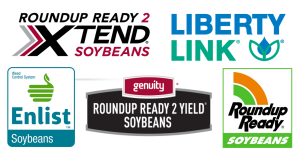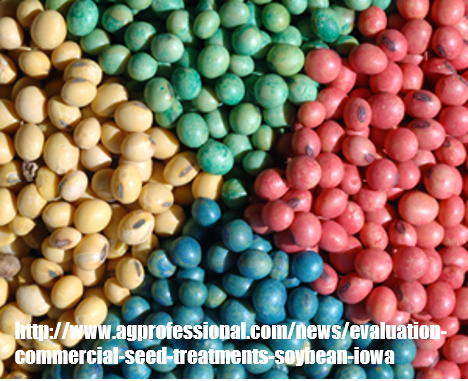Proper variety selection is one of the first steps in producing a high-yielding crop. Each variety has specific strengths and weaknesses that make it more or less suited for a given environment. Maturity group, yield potential, disease tolerance, and herbicide technology are all important to consider when selecting a variety.
Potential Yield
Yield potential is probably the most important factor when selecting soybean varieties. Selecting a variety that is high yielding is important, but even more important is selecting a variety that is yield-stable across multiple locations and years. Yield potential is very sensitive to environmental conditions so multi-year, mulit-location data will provide the most accurate indications of a given varieties “true” performance. Remember that the newer varieties don’t always out-yield the older varieties and many different companies offer quality varieties.
Soybean Maturity
A wide range of maturity groups have been successful in North Carolina from III’s – VIII’s. Selecting the appropriate maturity for your environment and production system is critical to maximizing yield. It is recommended to pick a variety that maximizes growth prior to entering reproductive stages, but still flowers early enough to reach physiological maturity before the first killing frost. Planting a range of maturities may help mitigate risks from weather events and spread the workload during the season.
Herbicide Resistance
Herbicide resistance should play an important role in variety selection. With dicamba and 2-4D resistance varieties available in 2017 and our current Roundup and Liberty resistance, there are many herbicide resistance options this year. The complex cloud of regulations and specific herbicide use/restrictions may complicate your decision even more. In areas with populations of Roundup and PPO resistance weeds, Liberty may be a smart choice. Regardless of which system you choose, it is important to mark fields with different types of herbicide varieties to prevent misapplication and off-target drift.

Disease
Disease resistance is another important factor to consider when selecting a soybean variety. Genetic resistance is probably the most cost-effective way to manage disease. A wide range of environmental conditions occur across the state of North Carolina during the growing season and these conditions often influence the occurrence and severity of soybean diseases. While no single soybean variety can provide complete protection against all diseases that may occur, knowing the history of disease in a particular field will help select a variety with the most appropriate package of disease resistance.

Differences in SDS symptoms between susceptible (left) and tolerant (right) soybean varieties. (Source: https://www.pioneer.com/home/site/us/products/soybean/high-yield/variety-selection/).
Seed Treatments
Seed treatments are essentially insurance against seedling diseases. Billions of dollars are spent on seed treatments but it’s important to know what you are investing in. Seed treatments can help protect yield potential by promoting germination and early plant vigor. Seed treatments may include fungicides, nematicides, insecticides, biologicals, inoculants or any combination of the above. In certain environments (cool, wet soil) a seed treatment may be a smart investment.
Choosing varieties with the correct maturity range, disease resistance, and herbicide resistance will set you on the right track for success.
References
Porter, S. 2016. Sassy, Savy, and Shrewd Soybean Selection for 2017. ILSoy Advisor. http://ilsoyadvisor.com/agronomy/2016/september/sassy-savvy-and-shrewd-soybean-selection-for-2017/.
Davidson, D. 2016. Variety Selection. Plant Management Network. http://www.plantmanagementnetwork.org/pub/crop/news/2016/VarietySelection/.










